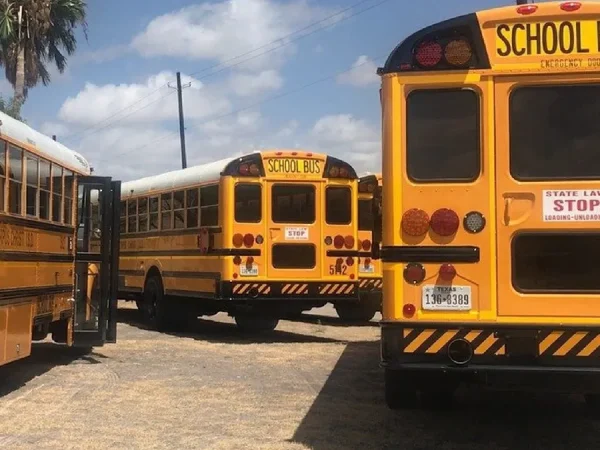Do Prison Work Programs Reduce Recidivism?
Punishment or rehabilitation? One questions the purpose of American prisons as beyond the concrete walls lies the unequivocal truth that U.S. penal institutions need reform. America imprisons more of its population than many developed countries, with 6,613,500 persons under the U.S. adult correctional systems according to a report from the Bureau of Justice Statistics. The National Association for the Advancement of Colored People (NAACP) states that the U.S. makes up 5% of the world’s population, but has 21% of the world’s prisoners. Not to mention, the blurred lines between justice and racial discrimination highlight the glaring biases deeply ingrained in every stage of the prison system that feed into the perpetual cycle of poverty and crime. The Washington Post’s report on data analysis from the U.S. Sentencing Commission found that when black men and white men commit the same crime, on average, black men receive a sentence that is 20 percent longer.
When prisoners are released back onto the streets, do they find meaningful jobs and lead lives as productive citizens or do they fall through the cracks and recede into their old habits? Apparently, the latter is overwhelmingly true. According to a report by the United States Sentencing Commission, 49.3% of offenders in federal prisons were rearrested within eight years. Recidivism is defined as an offender’s repeated run-in with the criminal justice system. The National Institute of Corrections under the United States Department of Justice reports that each inmate costs the state of Maryland $38,383.
To combat this problem, a two-pronged approach must be implemented. First, prisoners need to be reacclimated to society. More funds should be allocated to job training and education programs to connect prisoners to work experience that they will use when they are released from prison. Chandra Bozelko, a former inmate who is now an author and a columnist, recounts in The Los Angeles Times that while she was an inmate, her “prison job made [her] feel like [she] was fulfilling [her] existential duty to society: [she] was contributing.” Research by the Indiana Department of Correction claims that unemployment is the biggest predictor of recidivism; the Brennan Center for Justice states that approximately 70 million Americans have arrest records, though a 2012 survey by the Society for Human Resource Management found that 86 percent of employers use criminal background checks. With this many Americans with arrest records, businesses can turn down many qualified applicants.
Private companies can contract with prisons, throwing a lifeline to inmates. This labor is not cheap, however, as The Los Angeles Times reports that it is a federal mandate for private contractors to pay inmates minimum wage. In private contracts with prisons, the state may use a part of the prisoners’ wages to cover the costs of incarceration. The real wage that prisoners are left with would still be higher than the income they would receive from the prison for performing menial labor. The Prison Policy Initiative states that the average daily wage that prisoners receive for non-industry prison jobs (such as sewing uniforms or cleaning for the prison) is 86 cents. Thus, it is in the government’s best interest to encourage private companies to form contracts with prisons and take advantage of the potential workforce for cheap labor that not only benefits prisoners by giving them jobs and larger incomes to prepare them for future work, but also gives them a purpose in prison life.
Poolesville SMCS student Priyanka Madhavan believes that “inmates should have a chance to assimilate back into society” and supports investing in “rehabilitation programs in jails to offset costs associated with recidivism in the long run.” In addition to prison programs, Madhavan commented on the stigma associated with ex-offender status, remarking how “employers should be more open in hiring people who have been in prison, since there have been a lot of strict rules about that.”
In Montgomery County, correctional facilities provide programs and services for offenders to develop positive work habits to bolster employability upon release. A One Stop Employment Center provides pre and post release services that assist offenders with skills assessment and job searches to secure sustainable employment positions. The Pre-Release Center (PRC) smoothens the transition from incarceration to release by providing mental health services, anger management, conflict resolution, and other programs. PRC requires employment within 28 days of entry.
The administration at the Montgomery County Department of Correction and Rehabilitation (MCDOCR) believes in providing the inmates in their care and custody with opportunities, whether it be classes or work opportunities, which enhances their ability to be more successful upon their release into the community.
Susan Malagari, Warden for the Montgomery County Detention Services Division, believes that “many of [the inmates] benefit just from the idea that someone believes in them enough to give them a chance.” Because she believes the current Montgomery County Programs give inmates this idea, “as the Warden, [she is] fully supportive of all of [the] existing programs, as well as being open to entertaining any new ideas which come along.”
When asked on the benefits that the work programs entail, Malagari commented on how inmate participation in these programs “strengthens their sense of personal responsibility, exposes them to new situations where decision-making is all-important, and can build self-confidence.”

Jeffrey Guan is a Senior in the SMCS program and this is his third year writing for the Pulse. Outside of journalism, he is a history buff who runs cross...









radiogram roadman • Feb 7, 2020 at 9:18 am
I approve
manband bananaman • Feb 7, 2020 at 9:17 am
Top quality article from a top quality writer